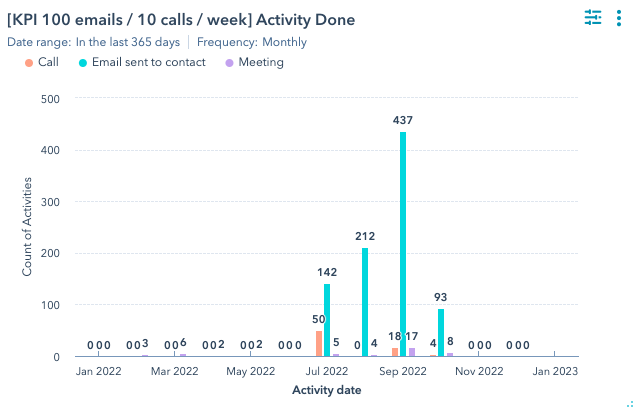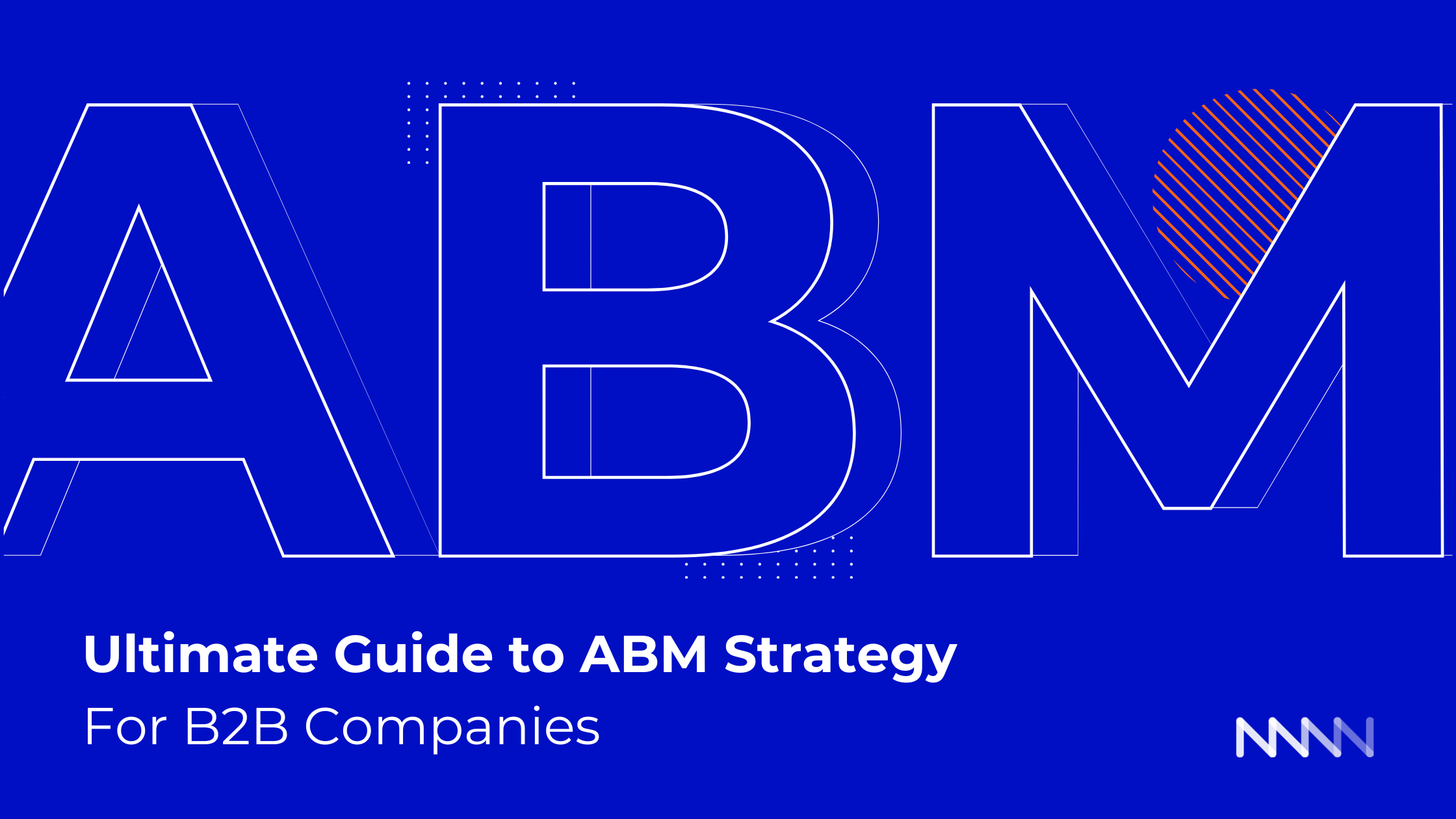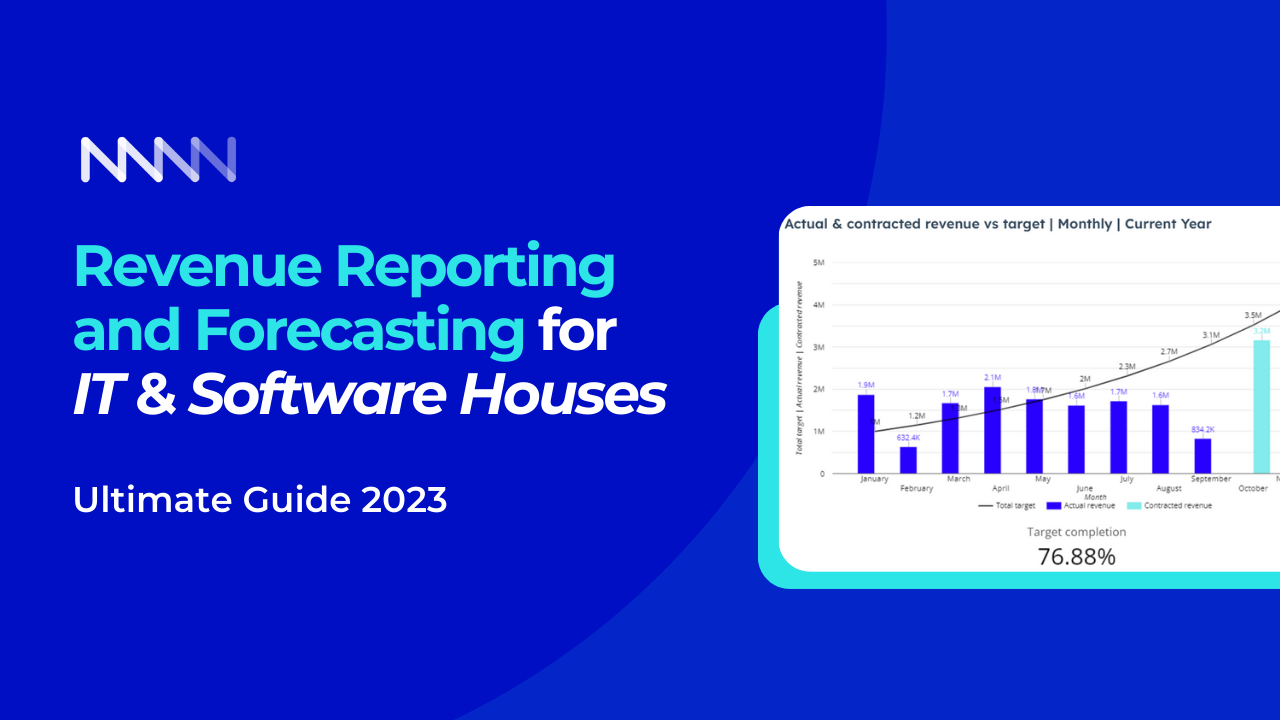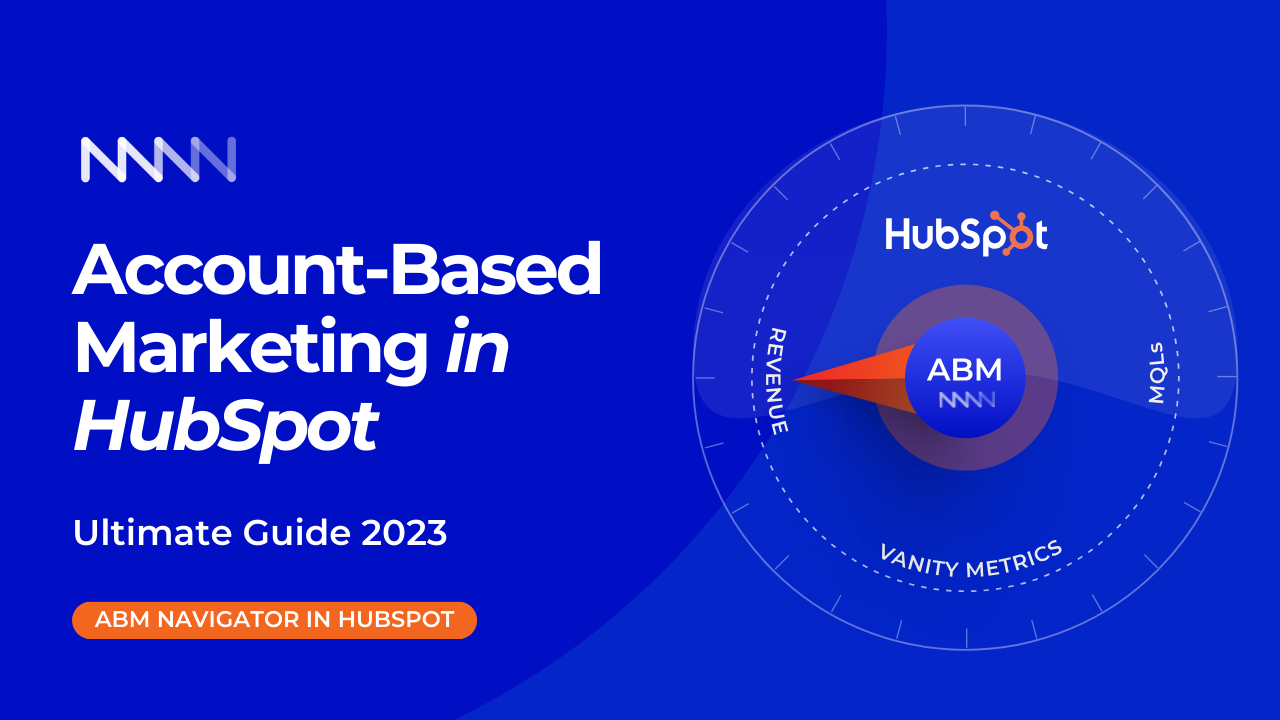How to set up Outbound GTM in HubSpot
Bad outbound instead of delivering leads, only hurts your brand. And if you operate in a competitive and saturated market it's even worse. But it doesn't have to be that way. It turns out, that this specific go-to-market motion needs two key things to drive revenue:
- The right process (Right KPIs, sales activities, and data tracking)
- The right infrastructure (HubSpot in this case)
This article will help you understand how you can make outbound a powerful GTM using HubSpot. And how to embed the whole process into its infrastructure step-by-step.
Grab your ☕ or 🍵 and let's get started.
Here is what I've prepared for you:
Table of Contents
Go-To-Market Model
Before we jump into building an Outbound GTM in HubSpot, you need to first understand the concept of the Go-To-Market Model.
We use the model presented by Winning By Design, with 5 unique sales processes. How do you know which one is right for your company? You match them based on two key factors:
1) the number of deals sold per year
2) the annual contract value (ACV)
Such analysis at the initial stage of building Outbound GTM is essential if you want to achieve maximum efficiency and growth.
As you can see on the graph:
- The horizontal axis shows the annual contract value (ACV)
- The vertical axis shows the number of deals per year.
The pattern is very clear. Outbound as GTM starts to make sense for companies with a minimum of $15k ACV. The higher the ACV, the number of deals decreases, but the complexity of the sales cycle rises.
This is why to increase efficiency, we additionally support 2-stage (sales motion) with prospecting (marketing motion).
And Field Sales and Named Accounts (sales motions) with ABM (marketing motion).
Prospecting (within the range of $15k to $50k ACV)
It’s a marketing activity supporting a 2-stage motion, which involves finding contacts based on firmographics like:
- Industry
- Headcount
- Revenue
- Annual Growth
- Business initiatives
And/or persona characteristics:
- Job title
- Pain points to solve
- Decision criteria
Account-Based Marketing (within the range of $50k to $500k ACV).
ABM (marketing motion) supporting Field Sales and Named Accounts (sales motions) is more complex than prospecting, as higher ACV needs a more sophisticated approach. The below graph presents 3 types of ABM with full characteristics to grasp the differences.
See?
Outbound is not just outreach via phone, email, and LinkedIn. It’s a complex strategy that can set the pulse for your whole revenue growth. Or the opposite, lead to burnout of resources and money if you do it wrong.
This is why understanding Go-To-Market Model and the matching right sales process to your company is so important. A lot of organizations skip that part and in consequence, they mismatch their GTMs. Eg. they’re using a two-stage sales process while relying entirely on inbound content.
Result?
Terrible experience for the buyer and a waste of resources for the company.
We want you to avoid this.
Outbound GTM in HubSpot
“Theory without practice is empty” Immanuel Kant
Rockstar of 18th-century philosophy can't be wrong, can he? Let’s fill up our theory vessel with some practice then and put Outbound GTM where it belongs, into HubSpot infrastructure.
In HubSpot, you can create a "command center" of your outbound in a form of aggregated dashboards. All reports and sales intelligence are in one place.
Sounds tempting?
Hold your horses, cowboy. Before we put our outbound machine in motion, we have to understand every individual element of this miracle of revenue engineering.
KPIs Setup
Revenue
Setting up the right KPIs is a starting point for building your outbound GTM in HubSpot.
Remember, your Northstar is always revenue. It works like a compass that shows if your outreach activities navigate you in the right direction.
To gain that level of visibility, you have to set up the exact financial goal for a whole year.
In our example, the revenue KPI for one year is €80k. It’s a point of reference for your whole sales data analysis.
Amount in Company Currency shows you revenue derived from deals for a specific period of time (year in our example), so you can see whether you are getting closer to achieving your final goal, or not.
The count of deals shows you the exact amount of deals for a specific period of time.
Want to see how sales reps are contributing to revenue generation in shorter periods?Nothing easier. Just set up additional monthly revenue KPI.
In our example, we split it into Closed Deal Value and Pipeline Value.
Closed Deal Value shows you how much revenue is secured from deals against your benchmark in the given month.

Pipeline Value shows you how many deals are in pipeline in the given month

Meetings
If revenue is your Northstar, meetings, or more specifically opportunities from that meetings, are the fuel that makes you drive in its direction.
Here, we need to take a pause and explain two basic HubSpot concepts, lifecycle stages, and lead statuses.
Lifecycle stages in HubSpot help you categorize your contacts and companies based on where they are in your sales & marketing process and how they move forward.
Going with HubSpot's very own description:
- Lead: a contact or company that has converted on your website or through outreach activities.
- Marketing Qualified Lead (MQL): a contact or company that your marketing team has qualified as ready for the sales team.
- Sales Qualified Lead (SQL): a contact or company that your sales team has qualified as a potential customer.
- Opportunity (Opp): a contact or company that is associated with a deal (e.g., they're involved in a potential deal with your organization).
- Customer: a contact or company with at least one closed deal.
- Other: a contact or company that does not fit any of the above stages.
Small tip.
If you want to do outbound reporting in the easiest and most efficient way (who doesn't), you should do it in an account-based way. In a nutshell, you are assigning certain accounts to individual reps.

With that, you gain a bird-eye view of target accounts that your reps report on.
And here is where Lead Statuses come in.
They show you not only what is happening right now with the accounts in the sales process, but more importantly what actions SDR needs to take next.
Below you can see an example of how we are using Lead Statuses in MAN Digital.
- Raw - SDR still has 22 accounts to reach out to
- Assigned - 5 new companies have been assigned to the SDR
- Working - SDR is currently working on 167 accounts to qualify them
- Pipeline - 7 accounts are in the pipeline right now
- Won - you won 21 deals
- Nurture - SDR has to go back to 57 accounts, as he received some replies to his outreach, but the prospect is not ready to buy yet.
This is how both these fields look per company in CRM:
Tracking lifecycle stages (from Lead to Customer) and lead statuses (from Raw to Nurture) allows you to structure your sales process into a predictable playbook.
So, your salespeople know what activities they're supposed to do every day.
Additionally, HubSpot allows for tracking lead statuses by sales reps. Using that you can see how accounts are distributed amongst them and how they are moved through the process by specific reps.
Too many variables to track? Don’t worry. HubSpot job is to free you from tedious manual tasks.
Setting up the right workflows in HubSpot makes the lifecycle stages change automatically whenever they meet certain criteria. All your reps have to do is follow the process you created.
Just take a look at our MQL Lifycecyle Stage example:
Simple, elegant, and efficient. (Remember, you have to set up separate workflows for every lead status)
Thanks to that, you can focus on what is really important, gathering sales intelligence and sales coaching.
Enrollments to meetings booked
Here you move to more granular data in your "outbound command center", sales activities metrics.
In this case, you want to find the answer to the question: “How many companies do my SDRs interact with on a weekly basis”?
You can see it through the lens of particular sequences. You can easily see how the number of engagements contributes to the number of meetings booked in certain weeks.
Want to see how your reps perform separately? Just match colors with sales representatives (eg. orange and blue). Now you see who is contributing the most to the quotas. And how many meetings this person generates on a weekly basis.
Now we pull out the magic wand.
Kidding, just some good intuitive HubSpot infrastructure and a pinch of math.
If you know your win rate (eg. you close 1 in 12 SQLs) you can calculate exactly how many meetings your sales reps need to generate to close one deal.
With that knowledge, you can set up a weekly and monthly benchmark for the number of meetings like in the below example.
Having that KPI in place (which will vary depending on your win rate) you gain predictability as you can say to your sales reps: "We need to generate at least 12 meetings per month to close one deal"
But it's not ending here.
So far you understand your results, and leading metrics, right? Now you want to understand the quality behind outreach activities to see if you can support your sales.
Enrollment tracker
Here is where the enrollment tracker comes with help.
Thanks to it you can see how many companies and personas were enrolled as they are connected to specific sales sequences.
You can track data like:
- how many personas are enrolled in the specific sequence
- open rate per persona
- reply rate per persona
- number of meetings booked by persona
A combination of these data shows you where you need to look for improvements in your sales reps' outreach activities.
Look at RevOps Research Campaign in this example. 63% open rate indicates that the subject line works nicely. But...4.55% shows that the body text is not relevant enough to open the conversation.
So, instead of burning out accounts, you have to go back to the drawing board to examine account research, sales sequences, and activities.
But.. the road to effective Outbound GTM is not paved by e-mails alone.
What about a quick call to see how HubSpot can help? Just kidding, but since we're talking about calls...
Calls Outcome Tracking

This modest dashboard hides the answer to one of the fundamental questions of the outbound:
Are your SDRs getting through or not?
If e.g you have a problem with the weak connections rate, these data immediately show if it's caused by a poor database (wrong numbers/no value) or if sales reps just make too few attempts.
Again, having that information in place, you can take the right actions.
And last, but not least. Every call can be recorded with an automatically generated transcript. A sales manager can go through calls together with a rep and see if there is a need for improvements and more sales coaching.
Not bad for such a small dashboard, hmm?
Linking e-mails/calls into one KPI
Anyone who is getting outbound seriously knows, that only a mix of different sales channels can bring results. This is why HubSpot allows you to set up aggregated KPIs combining activities like e-mails and calls.

In this example, a sales rep has to send 100 emails and make 10 calls per week. A sales manager can track if every activity is done in the right quantity and how they contribute to booked meetings. Of course, as sales sequences evolve, the number of channels or activities may be changed accordingly.
Ok, but you are not here to get excited about separate dashboards, right?
Full Outbound Dashboard in HubSpot
Let's put our outbound pieces together to see how they all work in a form of aggregated dashboards.
Of course, this is only one of many possible configurations. HubSpot gives you the freedom to customize your dashboards and fields depending on the complexity of your sales process and revenue strategy.
Whatever works best for you, my friend.
Summary
Outbound GTM is a well-defined strategy backed by data. Not a mix of random outreach activities. HubSpot helps you align every piece of your sales activities into one, efficient machinery.
It gives you full visibility into your sales team's activities and performance. So you can guide your decisions with actionable data and insights, not gut feeling
If you need help with HubSpot or just want to explore how it can benefit your GTMs - just get in touch.



